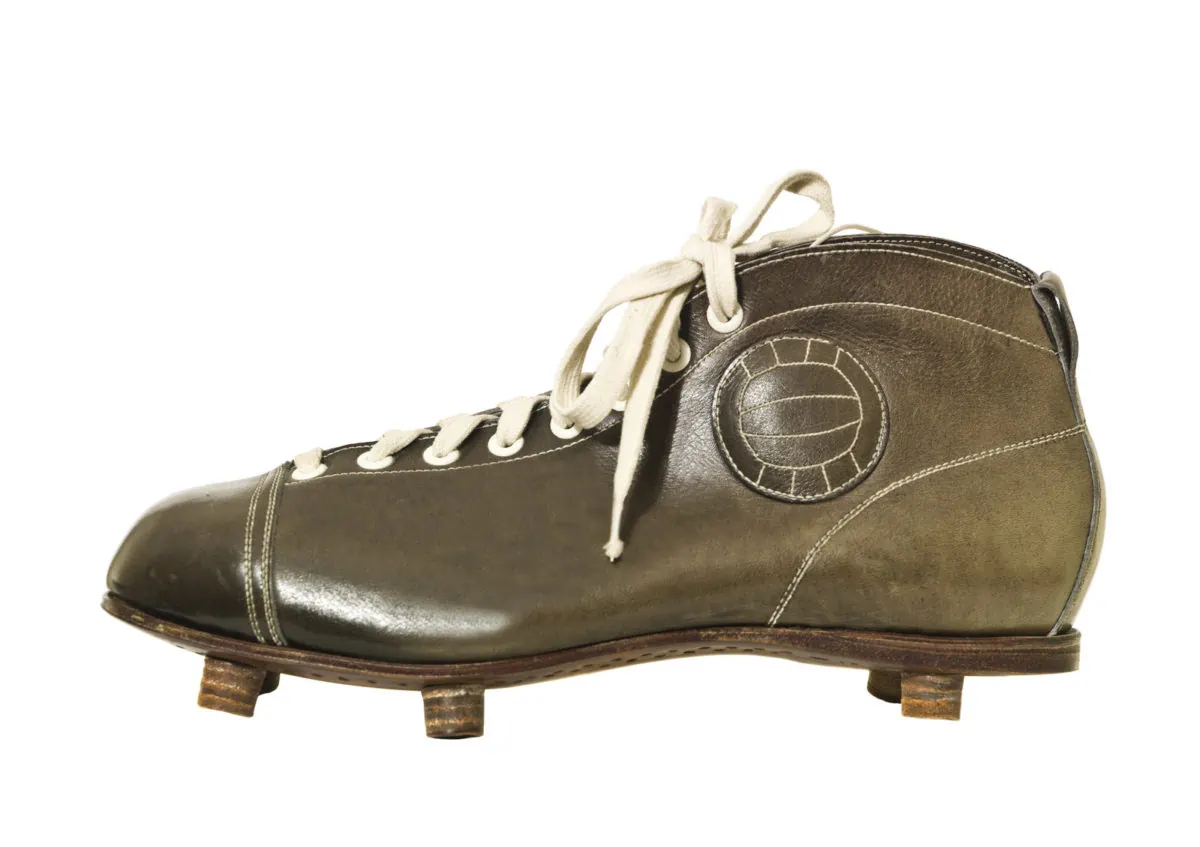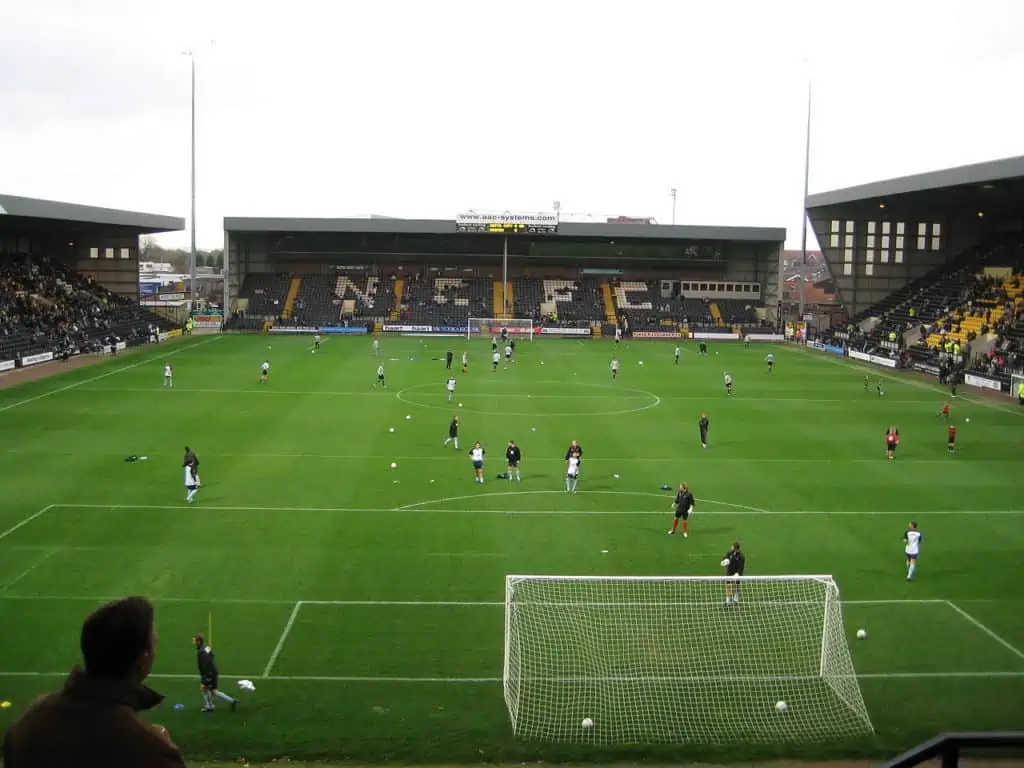Share the post "How and When Was Soccer Invented? (Must-Read!)"
Soccer is the most passionate game on the planet. I still remember the overwhelming joy I felt when my beloved Barcelona overcame PSG 6-1 in the Champions League second leg in 2017 at the last minute.
According to the World Atlas, soccer is the most popular sport, with a 3.5 billion audience with a widespread passion for soccer. How did it all begin?

How was soccer invented?
Modern soccer was invented in England around the 1860s when rugby was detached from soccer. However, the earliest forms of soccer are recorded in the second century B.C. in China during the Han Dynasty, where an ancient form of soccer, Tsu Chu was played.
This was adapted by the Japanese Kemari five centuries later.
Soccer is almost as old as human civilization, surviving and evolving through the ages and eras. Many schools of thought clash with how soccer was invented.
We’ll be exploring the exciting transformation of soccer from the Far East to when it became merged and modernized in England before it would later spread through Europe and the world.

When Was Soccer Invented?
The earliest proven history of soccer was in China around 255–206 B.C. in the era of the Han Dynasty. Soccer was a military ball game called Tsu Chu. The word Tsu Chu means kicking the ball.
In this game, they stuffed a leather ball with hair and feather. The players would have to show tremendous skill in controlling the ball with their legs, with the use of hands prohibited.

This game, however primitive, was as exciting as it was daring–as the game didn’t have the modern protective laws of today’s soccer.
The First Soccer Ball
The ball in this Tsu Chu early variant of soccer was about 35 cm wide. The game centered on players playing the ball into a net made from extended bamboo canes.
Players could also maneuver the ball with their shoulders, back, and chests.
The net was one of the most prominent differences between modern soccer and Tsu Chu. In Tsu’ Chu, they elevated the net about 30 feet from the ground.
Some five centuries later, Tsu Chu penetrated the Japanese sporting culture with soccer called the Japanese Kemari becoming prevalent.
While still being observed today, players in the Japanese Kemari form a ring and pass the ball among them without the ball dropping to the ground.
Doing this in a confined space, as in the Japanese Kemari, required exquisite skill and ball control.

Ancient Greek Soccer
While these ancient histories of soccer are the documented precursors of today’s soccer, there are yet stories of soccer being played in 2500 B.C. in Greece in the form of the Greek Episkyros.
For this intriguing game, players moved the ball over the boundary marks of their opponents. They achieved this with substantial dribbling, perseverance, and speed.

Other reports of soccer being played in ancient Mesoamerica about 3200 B.C. Here, the ball was symbolic of the sun. and the team captain who loses the game would be sacrificed to the gods!
The English and European Soccer Beginnings
As we know it today, Soccer persevered through the medieval era and shot to prominence in England in the early nineteenth century.
Before now, in the ninth century, soccer had already menacingly manifested in England. Here, a pig’s bladder was played across locations.
This game, which was more nuisance than entertainment, was prohibited in some areas of old Britain.
Soccer was reinvented in the 19th century in England. By this time, soccer was still a mash of rugby procedures and typical soccer procedures. Players could still handle the ball and grapple.

While high tackles were penalized, and the goalkeepers were already in place at both ends, the post had no bars.
This form of soccer was played in British public schools. There was no defined ball size, the soccer match’s duration, and no limit on the number of players each team could feature.
Elton and Rugby were the schools leading the soccer evolution in Britain through the 1800s.
The Early Mix of Soccer & Rugby
While at Rugby, players could maneuver the ball with their hands and their feet, the games at Elton rules were to move the ball with feet alone, involving technique with the leg.
While they referred to the game at Elton as ‘the dribbling game’, the games at Rugby were called ‘the running game’. Therefore the Elton variant was the closest relative of modern football.

This mix between rugby and soccer continued until a revolutionary meeting in Cambridge in 1848 to stipulate the game’s laws.
Deliberations would continue until 1863, when the first Football Association formed on October 26, 1863.
Rugby Transitioned To Soccer
The FA restricted the carrying of the ball with hands in open play, while tripping and shin-kicking were also outlawed from soccer. The size of the ball was decided as well as the weight.
The Blackheath club preferred to retain the physicality (or violence) inherent in rugby; hence they left, and eleven clubs agreed to remain with the football association and formally abide by the newly formed gameplay rules.
The resultant effect was the formal separation between soccer and rugby as we have them today.

The First Soccer Clubs
While soccer has been famous in England since the fifteenth century, it lacked the organization and formality we see in the game today. Small communities and teams of players existed.
These teams had no official status, so that they couldn’t be official clubs.

Formal soccer clubs began in Edinburgh far back in 1824. Before now, they played soccer between school teams.
The oldest soccer club today is Notts County, which formed in 1862, in Nottingham, England.
The industrial revolution of the mid-18th century in Europe, which was rampant in England, contributed to improved logistics for soccer as multitudes could move across (with emerging comprehensive networks of railways) to watch matches.
Bigger stadiums were built, and publicity was on the upsurge for soccer.
The First Professional Players
This enhanced the commercial nature of soccer, with tickets now being sold to games and clubs paying soccer players to become professional athletes.
The first professional football league season had twelve participating clubs. The number shot up quickly, and by 1871, many professional clubs in England were contesting for the Football Association Challenge Cup (otherwise known as the F.A. Cup).
Early Soccer Attendances
By 1872, soccer had gone internationally, with an audience of 4,000 spectators pooling up at the Hamilton Crescent to watch the epic match between England and Scotland.
The match ended with a goalless draw. The F.A. Cup final in 1894, between Bolton Wanderers and Notts County, had an unprecedented 37,000 spectators in attendance. Notts County triumphed by a 4-1 scoreline.
One of the oldest filmed soccer clips from 1901;
Soccer Growth
The following year they played a soccer match between two national teams for the first time.
The game that involved England and Scotland ended 0-0 and was watched by 4,000 people at Hamilton Crescent (the picture shows illustrations from this occasion).
By 1883, with the increasing acclaim of soccer, it hosted the first international competition ever in soccer history.
Four nations participated, including England, Wales, Scotland, and Ireland.
Worldwide Soccer
By now, soccer wasn’t just a European phenomenon anymore; as far as South America and Asia, soccer was fast becoming the favorite sport. In 1867, football was thriving in Argentina already.
With the expanding audience of football and the swell in the stakeholders, it became mandatory for a more robust regulatory framework to be in place to guide and speed up the global growth of soccer.

The Formation of FIFA
Therefore, on May 21, 1904, The Federation Internationale de Football Association (FIFA) was formed. Signatories came from the Netherlands, Sweden, France, Denmark, Switzerland, Belgium, and Spain.
They played the first FIFA world cup in 1930.
Britain was formally inducted into FIFA in 1905 but would take till 1950 before they were represented in a World Cup. By 1908, soccer was among the official games of the Olympic Games.

My love for soccer by now was already overwhelming. In India and South America, there was an admirable adoption of soccer. Massive investments were now being poured into this epic sport.
Stadium constructions saw ambitious and trailblazing designs executed. Soccer had grown to a height at the legendary Maracanã Stadium in Rio de Janeiro hosted about 200,000 spectators in the 1950 World Cup.
Where is Soccer Today?
Today, the passion for the game is mind-blowing, with soccer becoming super lucrative. One in every two people is a soccer fan. Over 3.5 billion people watched the last year’s World Cup in Russia.

There is even increasing adoption of female soccer. In the United States alone, about 16 million viewers tuned in on TV to watch the US soccer team beat the Netherlands in the 2019 FIFA Women’s World Cup final.
The Richest Soccer Clubs
The richest soccer club today is Real Madrid, worth $4.09 billion. This is closely followed by Barcelona, which is worth $4.06 billion.
Professional soccer players are among the highest-paid athletes today.
Cristiano Ronaldo, as of his 2019 rating, has a net worth of $450 million, while Lionel Messi has a net worth of $400 million.
Related Questions
Who Called The Game Soccer Or Football?
Americans and Canadians call the game soccer because they have a sport called football.
When Was The MLS Created?
Major League Soccer was created in 1995, and the first league game was in 1996.
When Was The EPL Created?
The English Premier League was created in 1992; before this, it was called the First Division.
Share the post "How and When Was Soccer Invented? (Must-Read!)"
Joel is a seasoned soccer journalist and analyst with many years of experience in the field. Joel specializes in game analysis, player profiles, transfer news, and has a keen eye for the tactical nuances of the game. He played at various levels in the game and coached teams - he is happy to share his insight with you.



